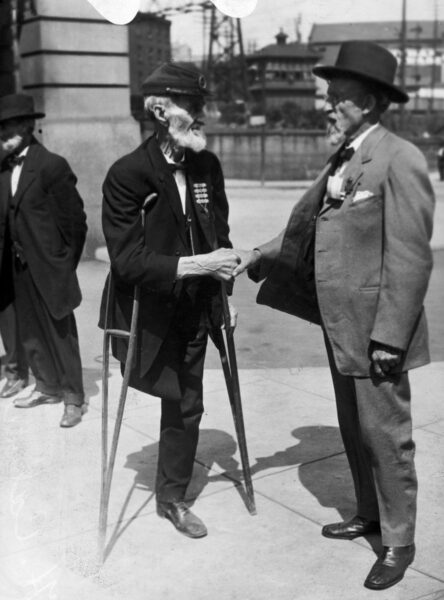In June 1863, Captain Jacob Roemer’s Battery L, 2nd New York Light Artillery, was dispatched to take part in Ulysses S. Grant’s campaign against Vicksburg, Mississippi. On the way west, Roemer halted his footsore men and horses in “a beautiful clover field” near Nicholasville, Kentucky. A man soon approached, whom Roemer correctly assumed was the field’s owner.
As Roemer was chatting with the farmer, the captain’s 13-year-old son, Louis—who was accompanying his father on the march—approached them. Roemer recounted the scene that followed in his memoir of the war: “Louis … came marching up as soldierly as an old veteran, clad in his full regalia, soldier’s coat, high top-boots and slouch hat.” The farmer, astounded by the sight of the boy soldier, asked, “Do you mean to tell me this young boy is making this campaign with you?” In response, Roemer “told Louis to answer for himself, and he did so with a soldier’s courtesy and then related some of his adventures.”
That the appearance of a boy in uniform had bewildered the farmer is somewhat surprising. While the younger Roemer was not officially enlisted—his outfit was likely a case of a military father indulging his young son’s interest in playing soldier—the Union army’s ranks were full of troops under the age of 18, a fact that was widely known among the public.
As Frances M. Clarke and Rebecca Jo Plant reveal in this issue’s cover story, “Boy Soldiers” (p. 26), roughly one out of every 10 Union soldiers was under the age of 18 at the time of their enlistment—the vast majority of them regular troops, not drummer boys or musicians. How were so many underage youths able to enlist in the army? What challenges—to themselves, their families, and the military—arose as a result of their presence? The authors address these and other key questions in this significant and insightful article.
As always, if you have a comment about this or any other articles in the issue, please email us at [email protected]. We’d love to hear from you.
* * *
In my editorial in our last issue, I teased the big changes that were happening with the Monitor’s digital offerings, including the addition of exciting new content at our revamped website. Among these is our recently redesigned email newsletter, The Gazette, which is free to all who sign up. Those interested can do so here: civilwarmonitor.com/newsletter. We think you’ll be glad that you did!


